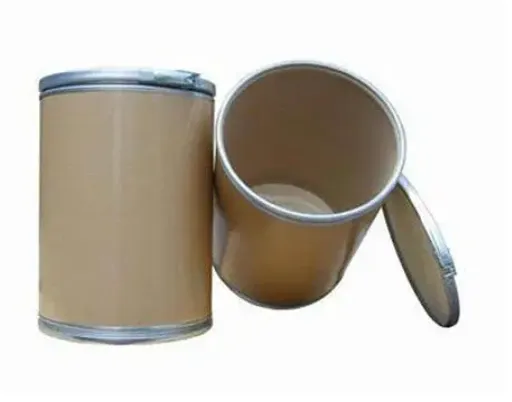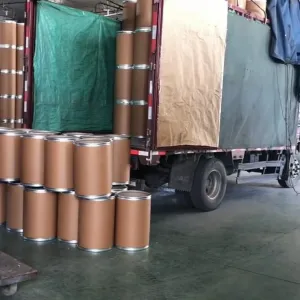
 Liaoning, China
Liaoning, China
 Liaoning, China
Liaoning, China
Send Email




8-Hydroxyquinoline/8-Quinol/8-Quinolol/8-Oxyquinoline / CAS 148-24-3
OVERVIEW
Uses
Packaging
| Pallets Packing | 20'FCL | 40'FCL | ||
| With | Without | With | Without | |
|
25 KG/Fibre Drum
≥99%
|
9 MT
|
--
|
18 MT
|
--
|
Lead Time
Out of Stock
REQUEST A QUOTATION
SubmitDESCRIPTION
English Name: 8-hydroxyquinoline
CAS No.: 148-24-3
Molecular formula: C9H7NO
Molecular weight: 145.16
EINECS No.: 205-711-1
Melting point: 70-73 ° C (lit.)
Boiling point: 267 °C 752 mmHg
Density: 1.0340
Refractive index: 1.4500 (estimate)
Flashpoint: 267 ° C
Introduction to 8-Hydroxyquinoline(CAS 148-24-3)
8-hydroxyquinoline is an important intermediate in organic synthesis. The research on its synthesis process and the preparation and biological activity of derivatives are one of the hot topics in the field of chemistry, pharmacy and medicine.
As a metal ion chelating agent with excellent performance, 8-hydroxyquinoline has been widely used in the metallurgical industry and Chemical analysis of metal elements, extraction of metal ions, photometric analysis and metal corrosion prevention in analytical chemistry. Because most 8-hydroxyquinoline and its derivatives have biological activities, they are also widely used in the field of the pharmaceutical industry. Halogenated derivatives, nitration and N-oxide of 8-hydroxyquinoline are raw materials for the synthesis of drugs. They are also used as intermediates for the synthesis of pesticides, dyes and other functional materials. They have broad application prospects in analysis, environment and materials, as well as electroluminescence, conductive polymers and so on.
Chemical Properties of 8-Hydroxyquinoline(CAS 148-24-3)
White acicular crystal. Melting point 76 ℃, boiling point 266.6 ℃ (100.3kpa). Soluble in ethanol, benzene, chloroform, acetone and dilute acid, insoluble in water.
Uses of 8-Hydroxyquinoline(CAS 148-24-3)
The complexes as well as the heterocycle itself exhibit antiseptic, disinfectant, and pesticide properties, functioning as a transcription inhibitor. Its solution in alcohol is used in liquid bandages. It once was of interest as an anti-cancer drug. The reaction of 8-hydroxyquinoline with aluminum results in Alq3, a common component of organic light-emitting diodes (OLEDs). Variations in the substituents on the quinoline rings affect their luminescence properties. The roots of the invasive plant Centaurea diffusa release 8-hydroxyquinoline, which has a negative effect on plants that have not co-evolved with it.8-Hydroxyquinoline was used as a stabilizer of hydrogen peroxide in a rocket fuel oxidizer (T-Stoff) for the GermanMesserschmitt Me 163 Komet inWorld War II.
This product is an intermediate of halogenated quinoline anti-amebic drugs, including quiniodoform, chloroiodoquinoline, diioquinoline, etc. These drugs play an anti-amebic role by inhibiting intestinal symbiosis, which is effective for amebic dysentery and has no effect on extraintestinal amebic protozoa. In recent years, it has been reported abroad that this kind of drugs can cause subacute spinal cord optic neuropathy, so this drug has been banned in Japan and the United States. The disease caused by diioquinoline is less common than that caused by chloroiodoquinoline. 8-hydroxyquinoline is also an intermediate of dyes and pesticides. Its sulfate and copper salt are excellent preservatives, disinfectants and fungicides. This product is a complexometric titration indicator for chemical analysis.
Typical Properties
Agrochemicals > Pesticide Intermediates
API & Intermediate > Synthetic Anti Infective Drugs
GET SAMPLE
Submit- Overview
- Descriptions
- Sample





























